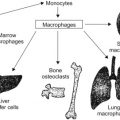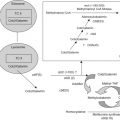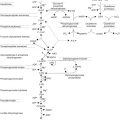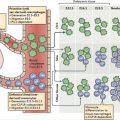Abstract
This chapter describes the current diagnosis, staging, and treatment of hepatic tumors. The most common pediatric hepatic tumor is hepatoblastoma. While hepatocarcinomas are usually seen in adults, they do present in children. With the advent of effective chemotherapy significant improvement in survival for patients with hepatoblastoma has occurred, although the treatment of hepatocarcinoma still remains a challenge. Coordination of chemotherapy and surgery is needed. In hepatic tumors, surgery and chemotherapy are essential, with liver transplantation as an accepted surgical option.
Keywords
Hepatoblastoma, hepatocarcinoma, pure fetal histology, α-fetoprotein, human chorionic gonadotropin, PRETEXT
Primary hepatic neoplasms are rare and account for only 1–2% of all childhood cancers. Hepatoblastoma accounts for approximately two-thirds of liver tumors in children. Hepatoblastoma and hepatocellular carcinoma (HCC) are the two most common malignancies that arise de novo in the liver. Table 30.1 lists the most prevalent malignant and benign liver tumors in children.
| Malignant | Benign |
|---|---|
| Hepatoblastoma | Hemangioma |
| Hepatocellular carcinoma | Hemangioendothelioma |
| Rhabdomyosarcoma | Angiomyolipoma |
| Undifferentiated embryonal sarcoma | Hamartoma |
| Angiosarcoma | Biliary cyst |
| Mesenchymal (mixed) | Adenoma |
| Sarcoma | Teratoma |
| Rhabdoid tumor | Myofibroblastic tumor |
| Yolk sac tumor | |
| Leiomyosarcoma |
Incidence
Table 30.2 lists the demographic features associated with hepatoblastoma and HCC. Hepatoblastoma occurs primarily in young children, with 80% of cases reported before 3 years of age. The incidence of hepatoblastoma has increased over the last 25 years. The cause for this increase is unknown, but increased survival of very-low-birth-weight infants may be a contributing factor. The association between the development of hepatoblastoma and low birth weight has been well documented.
| Host factor | Hepatoblastoma | Hepatocellular carcinoma |
|---|---|---|
| Incidence | ||
| White males | 1.4 per million | 0.5 per million |
| African American males | 0.9 per million | 0.0 per million |
| White females | 0.5 per million | 0.9 per million |
| African American females | 0.0 per million | 0.0 per million |
| Median age | 1 year | 12 years |
| Male:female ratio | 1.7:1.0 | 1.0:1.1 |
Epidemiology
The etiology of hepatoblastoma and HCC is unknown. Certain disorders increase the risk of liver cancer (see Table 30.3 ). Congenital anomalies which have been reported with hepatoblastoma include:
- •
Hemihyperplasia syndromes (formerly hemihypertrophy) including Beckwith–Wiedemann syndrome.
- •
Meckel’s diverticulum.
- •
Congenital absence of adrenal gland.
- •
Congenital absence of kidney.
- •
Umbilical hernia.
| Hepatoblastoma | Hepatocellular carcinoma |
|---|---|
|
|
a Gardner syndrome, a variant of familial adenomatous polyposis, is an autosomal syndrome associated with deletions on the long arm of chromosome 5. It is characterized by colonic polyps that undergo malignant change and benign and malignant extracolonic lesions. Tumors frequently associated with Gardner syndrome include carcinoma of the ampulla of Vater, papillary carcinoma of the thyroid, and, in children, hepatoblastoma. The childhood malignancies often precede the appearance of other manifestations by several years.
b A rare genetic disorder characterized by excessive physical growth during the first 2–3 years of life. They tend to be larger at birth. May have mild mental retardation, delayed development, and hypotonia.
Patients with Beckwith–Wiedemann syndrome and isolated hemihyperplasia should be screened every 3 months for hepatoblastoma with measurements of α-fetoprotein (AFP) tumor markers and abdominal ultrasounds until age 7 years. Though there is an association between hepatoblastoma and familial adenomatous polyposis (FAP), hepatoblastoma occurs in less than 1% of members of families with FAP. Screening in these families is controversial, but in children with APC gene (adenomatous polyposis coli) mutations it may be warranted.
Hepatic tumors have a wide geographic variation in incidence:
- 1.
They are the third most common abdominal cancer in Japan.
- 2.
They are seen more frequently in Asian and African children.
The geographic variation is thought to reflect the etiologic role of environmental conditions.
Pathology
Hepatic tumors are divided into two major histologic types: hepatoblastoma and HCC. Other less frequent liver tumors include transitional liver cell tumor, undifferentiated embryonal sarcoma of liver, and infantile choriocarcinoma. The pathologic classifications for hepatoblastoma and HCC are as follows:
- 1.
Hepatoblastoma.
- a.
Epithelial type.
- i.
Embryonal pattern.
- ii.
Pure fetal pattern.
- iii.
Macrotrabecular type.
- iv.
Small cell undifferentiated type or anaplastic
- i.
- b.
Mixed epithelial and mesenchymal type.
- a.
- 2.
HCC.
- 3.
Fibrolamellar HCC (a histologic variant of HCC and has a similar prognosis when adjusted for stage).
Clinical Features
The most common sign of primary liver malignancy is an upper abdominal mass or generalized abdominal enlargement. Table 30.4 outlines the clinical features of the various pathologic types of hepatic tumors. Table 30.5 shows the frequency of signs and symptoms at diagnosis in children with hepatoblastoma and HCC. The clinical manifestations are similar in both.
| Feature | Hepatoblastoma | Hepatocellular carcinoma | Fibrolamellar variant |
|---|---|---|---|
| Usual age of presentation | 0–3 year | 5–18 year | 10–20 year |
| Associated congenital anomalies | Dysmorphic features | Metabolic | None |
| Hemihyperplasia | |||
| Beckwith–Wiedemann syndrome | |||
| Advanced disease at presentation | 40% | 70% | 10% |
| Usual site of origin | Right lobe | Right lobe, multifocal | Right lobe |
| Abnormal liver function tests | 15–30% | 30–50% | Rare |
| Jaundice | 5% | 25% | Absent |
| Elevated AFP | 60–70% | 50% | 10% |
| Positive hepatitis B serology | Absent | Present in some | Absent |
| Abnormal B12-binding protein | Absent | Absent | Present |
| Chromosomal abnormalities | 11p15.5, 18, 17p13 occasional loss of heterozygosity | 17q11.2, 20p12, 11q22-23 rare presence of TP53 mutation | Not reported |
| Distinctive radiographic appearance | None | None | None |
| Pathology hepatocytes | Fetal and/or embryonal cells + mesenchymal component | Large pleomorphic tumor cells and tumor giant cells | Eosinophilic with dense fibrous stroma |
Stay updated, free articles. Join our Telegram channel

Full access? Get Clinical Tree







